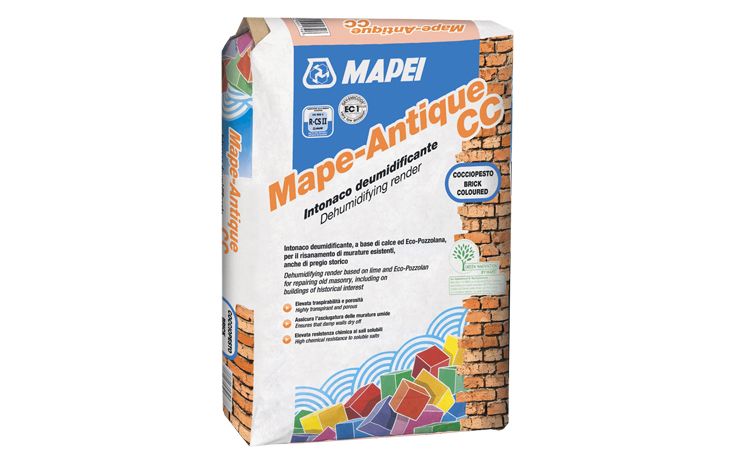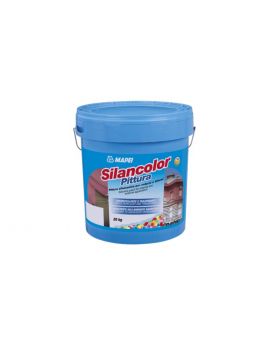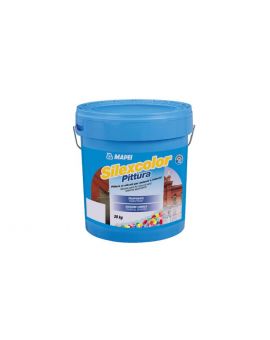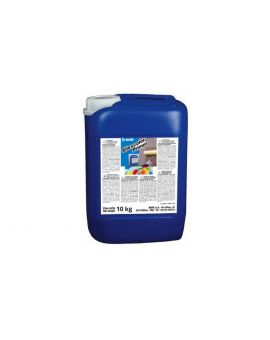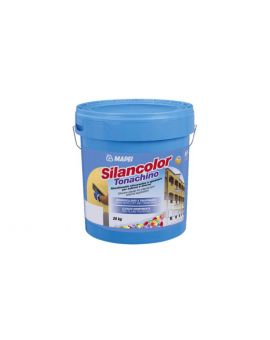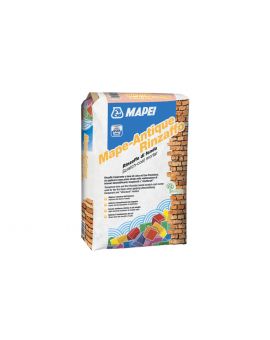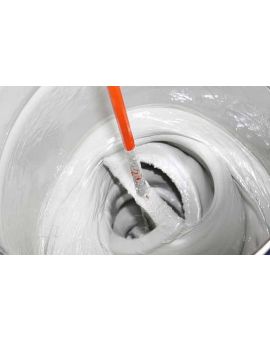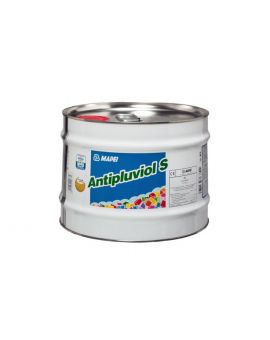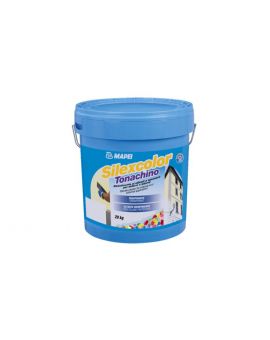£7.75 delivery on orders excluding certain products & postcodes *
Mapei Mape-Antique CC Dehumidifying Render
Mapei Mape-Antique CC is a macro-porous, salt-resistant de-humidifying breathable render, based on lime and eco-Pozzolan. Ideal for restoring old masonry such as on buildings of historical interest.
Best Uses
Mapei Mape-Antique CC is ideal for the repair of old masonry deteriorated by the presence of capillary rising damp, including on buildings of historical and artistic interest. This lime based render is also ideal for the repair of masonry deteriorated by the disintegrating action of concentrated salts. The Mapei Mape-Antique range consists of professional grade breathable render solutions able to be overcoated within a full Mapei masonry paint system.
Rebuilding lime-based render deteriorated by the action of atmospheric agents and environmental conditions or by ageing. Provides a plastic-thixotropic consistency which is easy to apply by trowel on both vertical surfaces and onto ceilings.
Some application examples include:
- Internal and/or external macro-porous, de-humidifying render on old masonry with capillary rising damp
- Internal and/or external macro-porous, de-humidifying render on old stone, brick, tuff or mixed masonry with saline efflorescence
- De-humidifying render on structures in lagoon areas or close to the sea
- New de-humidifying render or reconstructing old lime-based render on stone, brick, tuff and mixed masonry, including on buildings of historical and artistic interest with a conservation order or under the protection of the National Trust
- Touching-up and plumbing facing walls with gaps and uneven surfaces
- Pointing between layers of stone, brick and tuff on masonry with a “natural finish”
The properties of mortar made using Mape-Antique CC, such as mechanical strength, modulus of elasticity and porosity, are very similar to mortar made using lime, lime-pozzolan or hydraulic lime originally used in the construction of old buildings. Compared with these types of mortar, however, Mape-Antique CC also has properties which make the product resistant to various chemical-physical aggressive phenomena, such as the presence of soluble salts, freeze-thaw cycles, the leaching action of rainwater, alkali-aggregate reactions and the formation of cracks caused by plastic shrinkage.
To get a full render system specified for your individual circumstance, contact our Technical Team.
Application
When working on particularly damp internal walls or in cold weather, the setting and hardening times of Mape-Antique CC are considerably longer and much more time than usual must be allowed for the product to cure. The product may give off a different odour for a while when curing under such conditions and may turn green in some areas. The odour and green colour will gradually disappear as the product and wall dry out until it takes on its characteristic light colour.
Prepare the substrate as per datasheet guidance.
Gaps and uneven areas in the masonry must be repaired by patching or tacking with Mape-Antique CC, Mapei Mape-Antique Allettamento or Mape-Antique Strutturale NHL in combination with pieces of stone, brick or tuff with characteristics as similar as possible to the original material.
Saturate the substrate with water to prevent it from absorbing water from the mortar and compromising its final performance characteristics. Excess water must be left to evaporate off so that the masonry is saturated, and the surface is dry. Compressed air may be used to speed up this process. If the substrate cannot be saturated with water, we recommend that it is at least dampened to allow the mortar to bond correctly.
If there is capillary rising damp, before spreading on the Mape-Antique CC, apply a layer of Mape-Antique Rinzaffo approximately 5 mm thick to completely cover the substrate to improve the bond of the render, even out the absorption of the substrate and slow down the transfer of the salts.
On mixed walls or on walls out of plumb by more than 4-5 cm, which would lead to the layer of render having an irregular thickness, we recommend inserting Ø 2 mm zinc-plated metallic mesh with a mesh size of 5 x 5 cm before applying the Mape-Antique Rinzaffo. The mesh must be fixed in place to the wall with nails, plugs or chemical anchoring (such as Mapefix PE SF), with a small gap between the wall so that it becomes embedded in the middle of the layer of render. Form levelling strips with Mape-Antique CC or place vertical guides in position to define the correct planarity and thickness of the render.
Prepare the product as per the Product Data Sheet recommendations.
Application of the product
If a layer of Mape-Antique Rinzaffo has been applied, for example on masonry with capillary rising damp and soluble salts, wait until this layer has “set” and then apply a layer of Mape-Antique CC at least 20 mm thick with a trowel, starting from the bottom of the wall. If the thickness to be built up is thicker than 30 mm, Mape-Antique CC must be applied in several layers. Each layer must be applied without tamping the previous layer. After applying the mortar, wait a few minutes and level off using an aluminium H-type or blade-type straight edge by passing over the surface horizontally and vertically until it is flat. Remove the vertical guides, if they have been used, and fill the gaps with Mape-Antique CC. Finish off the surface of the render with a plastic, wooden or sponge float a few hours after application, according to the surrounding temperature and conditions.
Never press down on the surface of the Mape-Antique CC otherwise the porosity of the render would reduce and, as a result, evaporation of the humidity in the masonry would be obstructed. Even though Mape-Antique CC contains products which constrict the formation of micro-cracks, it is good practice to apply the mortar when the wall is not exposed to direct sunlight and/or wind. In such cases, such as during hot and/or particularly windy weather, take special care when curing the render, especially during the first 36-48 hours. Spray water on the surface or employ other systems to prevent the mixing water evaporating off too quickly.
If a finer-grained surface finish than the normal tamped finish of Mape-Antique CC is required, apply a layer of Mape-Antique FC Ultrafine, Mape-Antique FC Civile or Mape-Antique FC Grosso skimming compounds with different grain sizes. Even though Mape-Antique FC Ultrafine and Mape-Antique FC Civile may be applied on any type of lime-based render, including macro-porous de-humidifying render, the fine grain structure of these skimming compounds tends to reduce the vapour permeability of the render. In such cases, it is better to use Mape-Antique FC Grosso, which was thick grain structure or silicate-based Silexcolor Tonachino or siloxane-based Silancolor Tonachino, coloured coating products applied in thin coats after applying their corresponding primers (Silexcolor Primer and Silancolor Primer).
Always wait until the render and skimming layer, if applied, are completely cured before painting the surface or applying any other type of finishing product. Paint the surface with Silexcolor Paint or Silancolor Paint after applying their corresponding primers. For constructions particularly exposed to rain, if the render does not require any coating, it may be protected with a transparent water-repellent product such as Antipluviol S siloxane resin impregnated in solvent or Mapei Antipluviol W siloxane resin impregnated in water dispersion.
Test Results
- Classified as R according to EN 998-1 Standards: “Renovation mortar. Mortar designed for internal/external render applied on damp masonry walls containing water-soluble salts”, Category CS II
- Reaction to fire: EN 13501-1 value declared by manufacturer Class A1
- Thermal conductivity (λ ) (W/m·K): EN 1745 tabulated value 0.61
- Coefficient of permeability to water vapour EN 1015-19: ≤ 10μ
Technical Info
| Components: | Single Pack |
| Type: | Render based on lime and Eco-Pozzolan |
| Stock Colours: | Cocciopesto (Brick coloured) |
| Tintable: | No |
| Compressive strength after 28 days (N/mm²): | Category CS II |
| Bond strength to substrate (N/mm²): | ≥ 0.4 Failure mode (FP) = B |
| Suitable Substrates: | Lime-Based Render, Failing Masonry |
| Application Method: | Trowel |
| Theoretical Coverage: | 15 kg per m² (per cm of thickness) |
| Capillary action water absorption (kg/m²): | 3.5 |
| Cleaner / Thinner: | Mortar may be removed from tools with water before it hardens. Once hardened, cleaning is difficult and must be carried out mechanically. |
| Shelf Life: | 12 months in a dry, covered environment in its original, unopened packaging. |
| Packaging: | Available in Single 25 Kg Bags and Full Pallets of 50 Bags |
